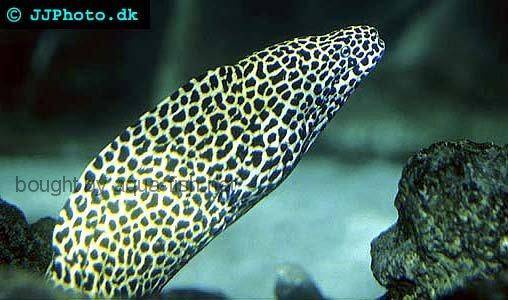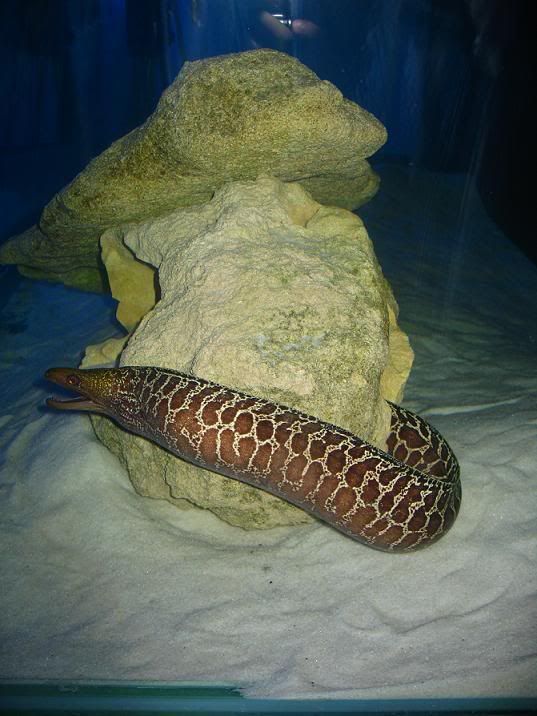CajunDiva
Contributor
That was actually the divemaster...I thought he'd seen it all, but this really got him going
Welcome to ScubaBoard, the world's largest scuba diving community. Registration is not required to read the forums, but we encourage you to join. Joining has its benefits and enables you to participate in the discussions.
Benefits of registering include

I believe that is Gymnothorax undulatus.
AKA Undulated moray, Leopard moray,Common moray,Mottled moray......
I don't think it's a honeycomb,they usually don't have the darker looking head compared to the rest of the body.
I don't believe it is a Giant moray because they tend to have smaller "spots" or color patterns with a more uniform overall appearance.
It is often very difficult to ID a specific moray.I have seen morays known to be the same species with very different color patterns so I may be wrong.

I agree with you about the different colored head...that is what really throws me off. I wonder if they look a certain way when they are younger and then change with age?





